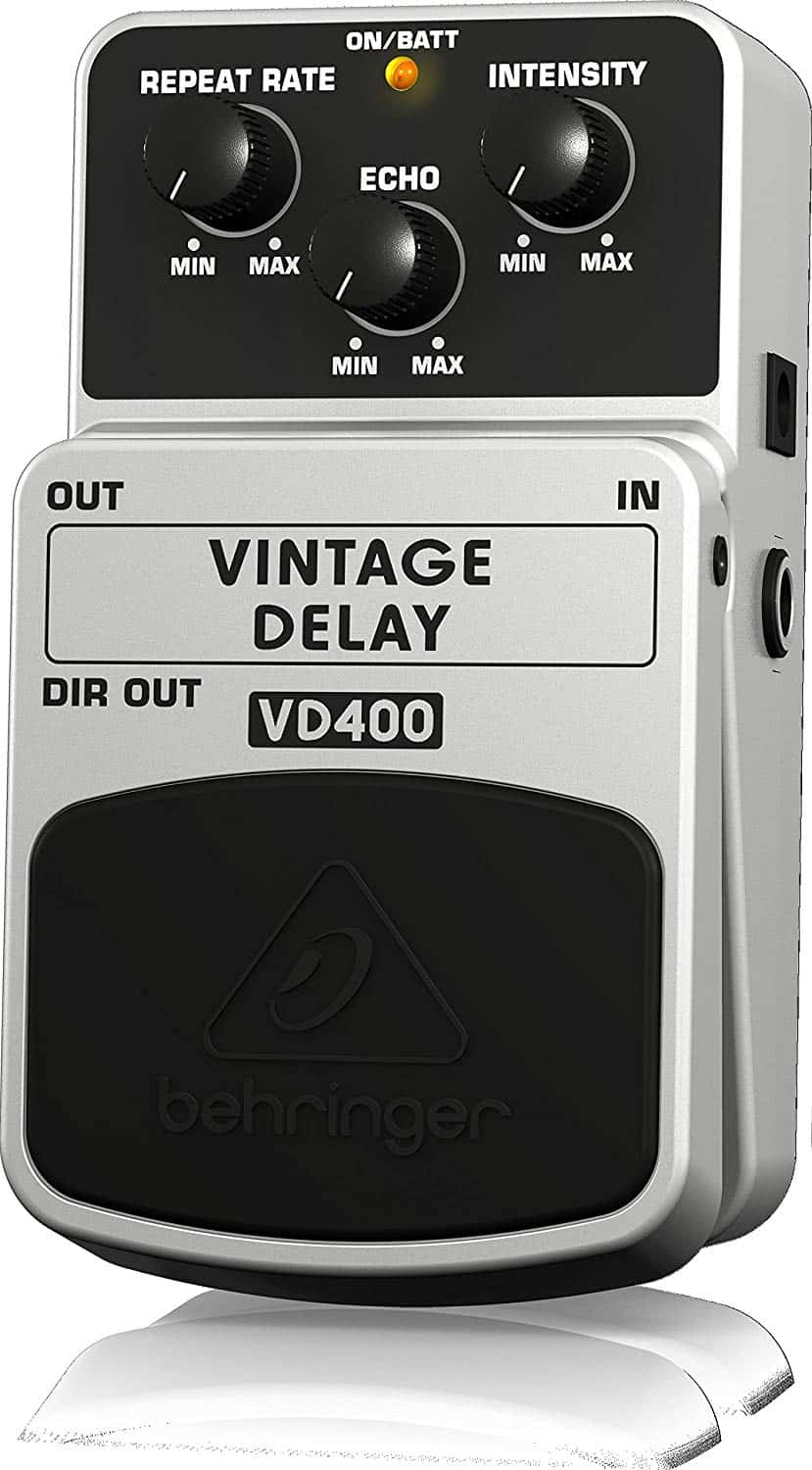
The Behringer VD400 Vintage Delay is a superb pedal that provides an authentic all-analog echo for a fraction of the price of the Boss DM-3 Delay it copies. They’re available on Amazon for around $25 at time of writing.
It’s Analog
First things first, though. Why would you want an analog delay? Isn’t digital better?
Well, it depends. Digital delays can, theoretically perfectly replicate your playing again and again, forever. In guitar world, though, we don’t always want “perfect” (otherwise, for example, we wouldn’t use distortion).
Analog delay circuits were invented to supersede the heavy-duty tape echo units of previous eras, like the Roland Space Echo and the Echoplex. These real-tape echo units sound amazing, but they’re expensive, hard to maintain, and inconvenient to transport.
An analog circuit (or “bucket brigade device”) moves a guitar’s signal through a chain of tiny capacitors. As the signal moves from one capacitor to the next, it loses some high frequencies and picks up some noise and distortion. By the time it reaches the end of the chain of capacitors, the signal is considerably darker. This degraded signal is mixed with the original input, and since it’s lost so much fidelity at that point, it will sit in the background as a blurrier variation of the input. Combined, the overall sound can be particularly rich.
(For a more in-depth analysis of BBD delays, Boss have a very informative article on their website here).
Analog delays existed for a few years before digital delays. So, much like how 90s skateboarding fans are nostalgic for the classic VHS-shot skate videos of that era, fans of late 70s-early 80s guitar tones value the distinctive blurry sounds of an analog delay pedal.
Analog delay pedals offer more than just nostalgic tones, though. Combine an analog and digital delay, set them up correctly, and you can build an even lusher, richer sound than a standalone delay. That’s why I bought my VD400 Vintage Delay: I already owned a digital delay and I wanted to make a bigger sound.
Specifications
The VD400 comes in a grey plastic enclosure, and takes a 9V battery or a standard power supply. It has a single input and two outputs – a standard output that blends the delayed and input signals, and one that outputs the input signal only (when this jack is connected, the dry signal is cut from the standard output). The internal components are high quality – there’s no unwanted noise and it doesn’t cause problems when turned off.
It has three knobs:
- repeat rate;
- echo, which sets the repeat level; and
- intensity, which controls feedback.
In addition to the exterior knobs, if you pop the chassis open you’ll find some internal trimpots. The leftmost one controls maximum repeat time and is factory-set to maximum: as this pot is turned counterclockwise, the maximum repeat time goes up, and the repeat quality goes down, so the blurry analog quality is accentuated. You can see this in effect on YouTube.
Downsides
The Behringer VD400 Vintage Delay has just a handful of shortcomings.
- The plastic case probably wouldn’t survive a severe impact, so you’ll probably want something sturdier if you’re on the road.
- The maximum delay time is just 300ms, which isn’t much compared to a digital delay like an EHX Canyon or Boss RV-3. Although you can increase the delay time by tweaking internal pots, it comes at the expense of fidelity. So, if you want pristine repeats past 300ms, you should probably go digital.
- There’s no tap tempo. This makes the VD400 a poor choice if you need to set delay time on the fly.
Conclusion
If you want a versatile analog delay at a low price, it doesn’t get better than the Behringer VD400 Vintage Delay. Whether you need to thicken your 80 hair metal leads, make your ambient soundscapes richer, or do anything in between, you can’t beat it. Buy one today!
